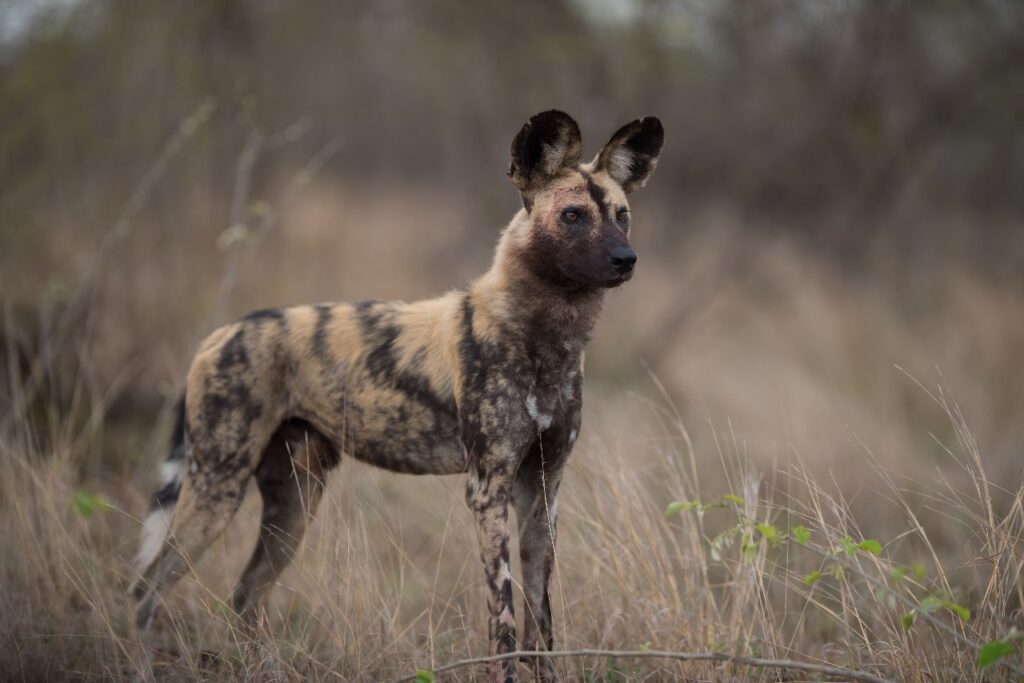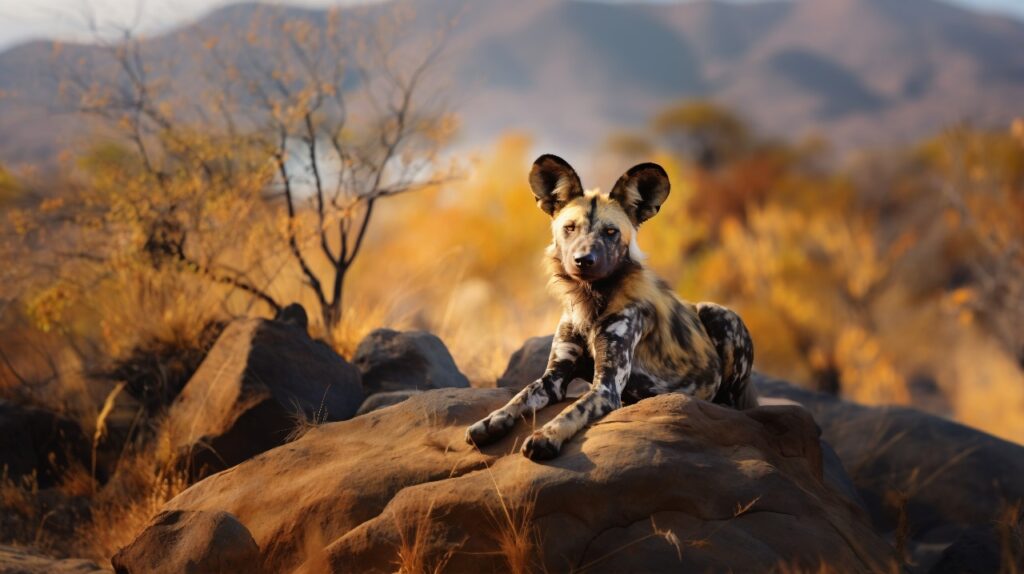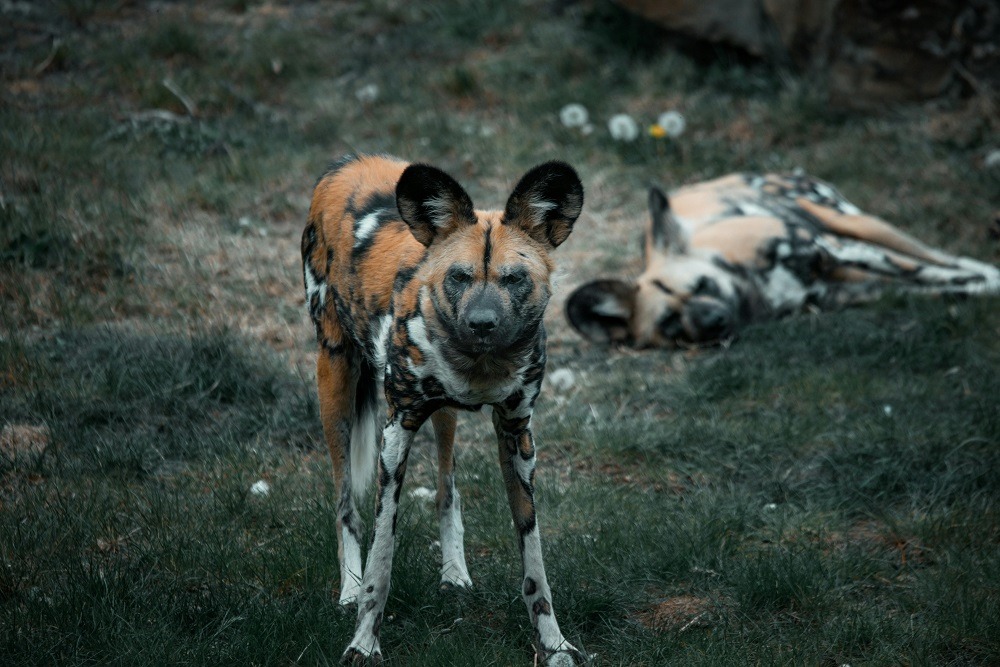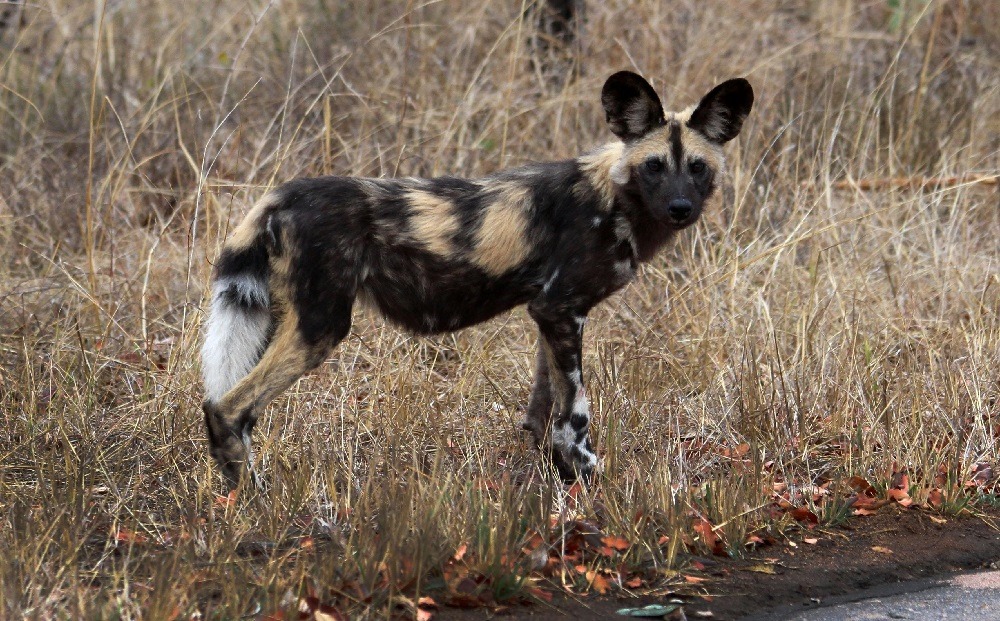When it comes to spotting African wild dogs, also known as painted wolves, the choice of country plays a major role in determining your chances. Although several countries in sub-Saharan Africa are home to these endangered predators, Botswana consistently ranks as the best country to see them in the wild. The Okavango Delta and Linyanti Wildlife Reserve are particularly famous for their thriving wild dog populations, thanks to effective conservation efforts and minimal human encroachment. Zimbabwe’s Hwange National Park and Mana Pools are also prime locations, offering vast wilderness areas where packs roam freely. In Tanzania, Selous Game Reserve (now part of Nyerere National Park) is one of the last strongholds of these elusive animals in East Africa, while South Africa’s Kruger National Park and its adjacent reserves like Sabi Sands provide excellent opportunities for sightings. However, Botswana stands out not only for the density of its wild dog packs but also for the quality of the safari experience, with fewer vehicles, pristine landscapes, and expert guides who know where to look for these highly mobile hunters.

Are African Wild Dogs Friendly to Humans?
African wild dogs are not domesticated animals and should never be approached as if they were pets. However, they are not naturally aggressive toward humans and generally keep their distance when encountered in the wild. Their social structure is tightly knit, with the entire pack working together to hunt, care for pups, and defend territory. This strong pack mentality means they are far more interested in interacting with each other than in engaging with people. On safari, when viewed from a vehicle, they often appear indifferent to human presence, allowing for remarkable photo opportunities. In rare cases where wild dogs have been rehabilitated for conservation purposes, they may tolerate close human contact, but this is strictly within controlled conditions. In the wild, maintaining a respectful distance is crucial to avoid causing stress or altering their natural behavior.
Can You See Wild Dogs in Kenya?
Kenya offers some of the most iconic safari destinations in Africa, but when it comes to wild dogs, sightings are rare compared to other predators like lions or leopards. Historically, wild dogs were widely distributed across Kenya, but their numbers declined sharply due to habitat loss, disease outbreaks from domestic dogs, and human-wildlife conflict. Today, they can still be found in certain areas, particularly Laikipia Plateau, Samburu National Reserve, and Tsavo National Park. Laikipia is perhaps the most reliable location, with community conservancies actively protecting packs and working to maintain safe migration corridors. While wild dog sightings in the Maasai Mara are possible, they are infrequent because the Mara’s open plains favor big cats, which often outcompete wild dogs for prey. For visitors keen on seeing them in Kenya, booking with a safari operator experienced in tracking these elusive animals greatly increases the chances.

What Are African Wild Dogs Afraid Of?
Despite their prowess as hunters, African wild dogs face threats from several predators and environmental challenges. Lions are their primary natural enemies, often killing wild dogs to reduce competition for prey. Hyenas also harass them, attempting to steal kills and sometimes injuring pack members in the process. In addition to predator competition, disease poses a significant threat; rabies and canine distemper, often spread by domestic dogs near wildlife reserves, can devastate entire packs. Wild dogs are also wary of humans, particularly in areas where they have been persecuted in the past. Habitat loss and encroachment have forced them into smaller territories, making them more vulnerable. While they are highly adaptable and strategic in their movements, their wariness toward potential threats is part of what keeps them alive in the competitive African savannah.
Are There African Wild Dogs in the Serengeti?
The Serengeti ecosystem, which stretches across northern Tanzania and into Kenya’s Maasai Mara, is world-famous for its wildlife, but wild dogs are not as commonly seen here as they are in southern Africa. They were once abundant in the Serengeti but disappeared in the early 1990s, largely due to disease outbreaks. In recent years, conservation programs have seen some success in reintroducing them, with occasional sightings reported in the western and southern parts of the park, particularly in less-touristed regions. However, their populations remain low compared to those of other predators. For safari-goers focused on wild dogs, the Serengeti is more of a bonus sighting rather than a guaranteed one, with better odds in reserves like Selous/Nyerere further south.
Where to See Wild Dogs in Namibia?
Namibia’s remote landscapes are ideal for wildlife lovers seeking unique safari experiences, and African wild dogs can be found in certain parts of the country. The Kavango-Zambezi Transfrontier Conservation Area, which includes Namibia’s Zambezi Region (formerly Caprivi Strip), offers the best chances, particularly in Bwabwata and Mudumu National Parks. These areas provide essential corridors for wild dog movement between Botswana, Zambia, and Angola. While Etosha National Park is Namibia’s flagship reserve, wild dog sightings there are rare due to the open nature of the terrain and competition from lions. Namibia’s community-based conservation initiatives have helped protect these wide-ranging carnivores, with local villages playing an active role in ensuring safe passage across borders.
Are There African Wild Dogs in Zoos?
Yes, African wild dogs are kept in zoos and wildlife sanctuaries around the world as part of global conservation efforts. Zoos that meet international animal welfare standards provide large enclosures designed to mimic natural habitats, enabling the dogs to maintain their social bonds and engage in natural behaviors. The aim is often to raise awareness about their endangered status and support breeding programs that may one day contribute to reintroduction projects. While seeing them in a zoo offers an educational opportunity, it cannot replicate the thrill of encountering them in the wild, where their cooperative hunting and intricate pack dynamics unfold in a way no artificial environment can match.
Can African Wild Dogs See at Night?
African wild dogs have excellent vision, which aids them during dawn and dusk when they are most active. While they are not strictly nocturnal, their eyesight in low-light conditions is well adapted for crepuscular hunting periods, giving them an advantage over prey animals that may struggle in dim light. However, they tend to avoid hunting in complete darkness, relying instead on daylight to coordinate their high-speed chases. Their hunting strategy depends on visual cues and coordination, making twilight and early morning prime times for activity. This is also when safari-goers have the best chances of witnessing their hunts.
How Many African Wild Dogs Are Left in Captivity?
Globally, there are only a few hundred African wild dogs kept in captivity, spread across accredited zoos and wildlife centers. The captive population is carefully managed to maintain genetic diversity, with breeding programs coordinated by organizations such as the European Endangered Species Programme (EEP) and the Association of Zoos and Aquariums (AZA). Because wild dogs are so reliant on pack structures, maintaining stable groups in captivity is essential for their well-being. These programs serve as an insurance policy against catastrophic declines in the wild, but the ultimate goal remains to secure and expand natural habitats where they can thrive without human intervention.
Where Do African Wild Dogs Sleep at Night?
African wild dogs typically rest in shaded areas during the heat of the day and may settle down in dense vegetation or shallow depressions in the ground at night. They are highly social sleepers, often curling up together for warmth and security. Unlike some predators that have permanent dens, wild dogs move frequently, especially when following prey migrations. When raising pups, however, they use a fixed den site—often an abandoned aardvark burrow—where the pack returns daily to feed and protect the young until they are old enough to join the hunts.
Is It Rare to See African Wild Dogs?
Yes, seeing African wild dogs in the wild is considered a special privilege. With fewer than 6,000 individuals estimated to remain across Africa, their low population density, vast territorial ranges, and preference for remote habitats make sightings uncommon. Even in areas with stable populations, tracking them requires skill, patience, and sometimes a bit of luck. Safari destinations like Botswana’s Okavango Delta, Zimbabwe’s Mana Pools, and South Africa’s Madikwe Game Reserve provide some of the best odds, but even there, the dogs’ constant movement means they are not guaranteed.
Where Are African Wild Dogs Mostly Found?
African wild dogs are most commonly found in southern Africa, particularly in Botswana, Zimbabwe, Zambia, Namibia, and parts of South Africa. They also survive in select regions of East Africa, including Tanzania’s Selous/Nyerere and Kenya’s Laikipia Plateau. They thrive in savannahs, woodlands, and semi-arid environments, avoiding dense forests and true deserts. Their need for large territories—often hundreds of square kilometers—means they do best in protected areas that are part of larger conservation landscapes, such as transfrontier parks that allow free movement across national borders.


